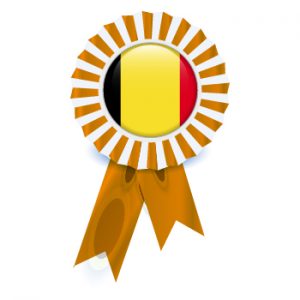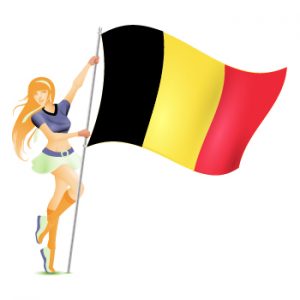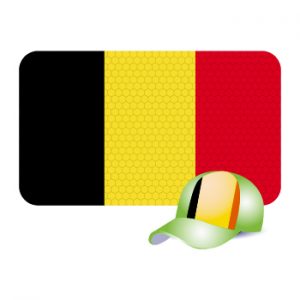
Endangered Languages of Belgium
30 Aug Endangered Languages of Belgium
Are you bilingual? How many languages do you know? Being bilingual helps you in coping language barrier between two different nations. According to estimation, roughly, there are about 6500 languages in the language community that people speak in different regions of the world. But do you know that there are lingoes that are near to extinction?
Such languages that are nearly going to extinct because of their fewer speakers are in danger. This article particularly focuses on the endangered language of Belgium. So, if you are a linguist searching for material about endangered languages, you are just at the right place! This blog post will list out the endangered tongues of Belgium. Let’s start exploring them.
What are the Endangered Languages?
An endangered language is likely to become extinct shortly. Most likely, a language disappears because it either has no speaker or some other tongue takes its place which is more common in the region. With the reversing trends, languages get extinct and new languages are born in the next century. History recalls the extinction of many tongues. Therefore, it is hard to predict the exact number of lingoes that were spoken by humans ever.
Here, we cannot even ignore sign languages because they also play their role as a communication medium for deaf people. Any languages that are of no use by the next generation will extinct when the last native speaker dies. Dozens of languages today have only one native speaker still living, and that person’s death will mean the extinction of the language: It will no longer be spoken, or known, by anyone.


Languages in Belgium
The Kingdom of Belgium primarily has three official languages. These are the indigenous languages including German, Dutch, and French. The Dutch language is the dominant language for over half of the Belgian population. People consider it their first language. The Dutch language got a lot of importance in that era, even now.
Along with French, it is the official language of the Brussels-Capital Region. French language, an indigenous language, is the lingua franca that people speak in the southern part of the country. It is a native language to about third half of the population. The German language took power in this nation again near the start of the 20th century.
The north part of Belgium is Flanders and the south is Wallonia. In 1848, the first voices demanding a bilingual state are in the north of the country. Walloon, however, is a minority language in Belgium. In the 19th century, the rise of the Flemish Movement was at its peak. Although Belgium is so language-rich there are still only three languages that are recognizable by the government. These include Dutch, French, and German.
However, it wasn’t until nearly the 20th century, the official language use of Flemish Dutch was in the discussion by the government in the Belgian Senate. In 1815, the French government in Belgium enforced the use of the French language in public life. But it became clear that the Dutch language is far more prominent and better than the French language.
Endangered Languages in Belgium
Now, since you have enough knowledge about the regional languages spoken in Belgium, let’s talk about the ones that are near to extinction in Belgium. Details of four such European languages that are near to extinction are below:
Flemish Sign Language
Flemish Sign Language is a deaf sign language of Belgium. This language is native to Flanders in Belgium. With time, the number of language speakers is decreasing, and therefore, it is near to extinction. It was initially introduced when the first deaf school was made in Flanders. This lingo influences the teachers which is why it was in use by them.
The rising importance of sign languages in the neighboring countries made it obvious that Belgium needs to introduce them too. By the beginning of the 20th century, there was a deaf school in every major town in Flanders. Some towns even had two: one for boys and one for girls. Most of the schools were residential and pupils only went home during the holidays, and later on also during the weekends.
As a result, regional sign language varieties started to develop around every school. Though it gained a lot of recognition in the first few days, even the linguistic department launched an online edition of this language. But currently, fewer people use it, and therefore, it is slowly becoming an endangered language.


Picard
Picard is a language or more appropriately, a set of languages that are similar to French. It is one of the largest groups of romance languages. Not many people speak it except the one living in the far north region of France. But there are some people in parts of the Belgian region of Wallonia, the district of Tournai, and a part of the district of Mons that consider Picard as their only language.
Some people may even adopt it as a language for administrative purposes. This lingo even has several other names. The residents of Picardy call it Picard simply but it has other names as Chti or Chtimi in the south part of French Flanders. But whatever name it is, linguists have combined them in a single group named ‘Picard’. Currently, there are not many people who speak this language and therefore it is an endangered language.
Walloon
Walloon is also a Romance language that is people speak in much of Wallonia and Brussels in Belgium. It is the most prominent lingo in the French language during the Belgian revolution. Despite its rich literature, beginning anonymously in the 16th century and with well-known authors since 1756, the use of Walloon has decreased markedly since France annexed Wallonia in 1795.
A French speaker has temporary access to this language. Subsequently, since the middle of the 20th century, the generational transmission of the language has decreased, resulting in the Walloon almost becoming a dead language. Today, there are rarely any people that speak this language, but it has the vast majority of its native speakers that are the elder ones.
In 2007, the number of people with knowledge of the language was around 600,000. The freedom of language in Belgium was in use by the government as the right to use French. Although there was personal freedom of language, still French was the only official language available to the new nation. Some audio recordings indicate through research to be in Walloon.
Western Yiddish
Western Yiddish is currently the only form of Yiddish that was in use by some people in the earliest history of the language. During the first few years, it remained quite a dominant language. It was a dominant branch in the Old Yiddish period. Western Yiddish comprises Southwestern (Swiss–Alsatian–Southern German), Midwestern (Central German), and Northwestern (Dutch–Northern German) Yiddish.
The language has many dialects as well which are used by the natives of Belgium. As the name indicates, this lingo was originated from Western Europe in the 9th century. Yiddish dialects are variants of Yiddish language and it is divided according to the region in Europe where each developed its distinctiveness.
Linguistically, Yiddish should be divided into distinct Eastern and Western dialects. From Eastern Yiddish, Northeastern dialects were dominant in 20th-century Yiddish culture and academia, while Southern dialects of Yiddish are now the most commonly spoken, preserved by many Hasidic communities.


